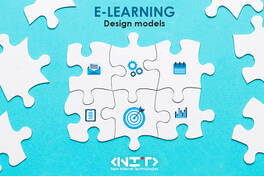
Approximate reading time: 1m 26s
All transactions have time, date and other details that are verified using sophisticated calculations. A transaction requires consensus, and every transaction is public.
This is a very efficient, secure and transparent way of doing transactions. It can save a huge amount of administration, red tape, effort and time. IoT can manifest its potential.
Importance of blockchain technology for education
Education is becoming more democratic and decentralized, yet the need for certification and maintaining reputation, remains. The focus on relevance and employability, the need for transparency, are things that blockchain technology can provide: it is a huge, open and secure database.
Who can use blockchain technology?
Blockchain technology can be introduced to educational institutions, groups of educational institutions, corporations - in fact, anyone who wants to securely store credits and qualifications - and make important information accessible to all.
1. Educational institutions.
Educational institutions can use blockchain technology to store their students' diplomas - a measure against diploma forgery. Encryption and two-factor authentication protect the information. Educational institutions will continue to issue paper diplomas, but employers will be able to verify their authenticity.
2. Groups of educational institutions.
Many educational institutions are forming clusters and cooperating. They need a shared repository to store diplomas and achievements. Blockchain technology gives them an accessible, shared resource.
3. Global Assessment.
The population is extremely mobile. Therefore, having a centralized database of certificates I achievements makes sense - whether you are moving from one educational institution to another, changing jobs, or moving to another country. Having a secure, online repository will be helpful.
4. Online course platforms.
Platforms offering online courses, such as Coursera, Udemy, Alison, and the like are a symbol of decentralized learning. But each platform issues its own certificates. The real value of their courses can increase if they start issuing unified certificates.
5. Vocational training centers.
Vocational training centers are fragmented and it is difficult to track the qualifications of people who use them. Blockchain technology can be used as a place to securely store course results.
6. In-company training.
Companies train their employees constantly. If they use blockchain technology, not only will they have a secure internal system, but that system can be used by their employees when they leave the organization.
Conclusion
Blockchain technology will hardly replace all current education and training models and technologies, but it can be a good addition.
Source: https://oeb-insights.com/10-ways-blockchain-could-be-used-in-education/.






